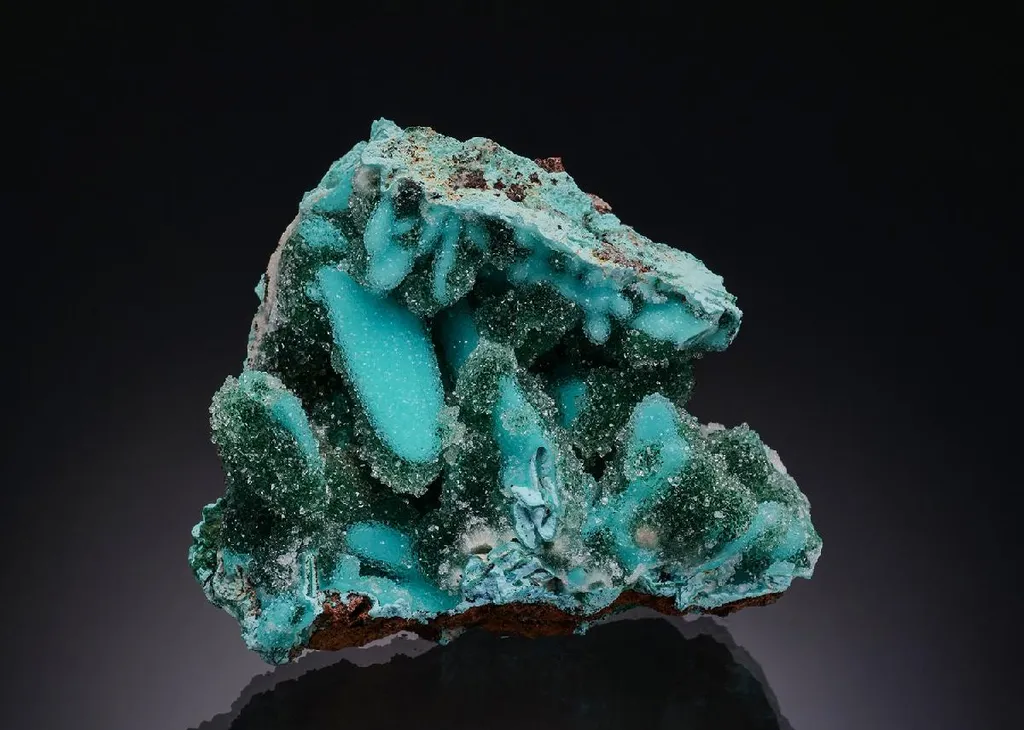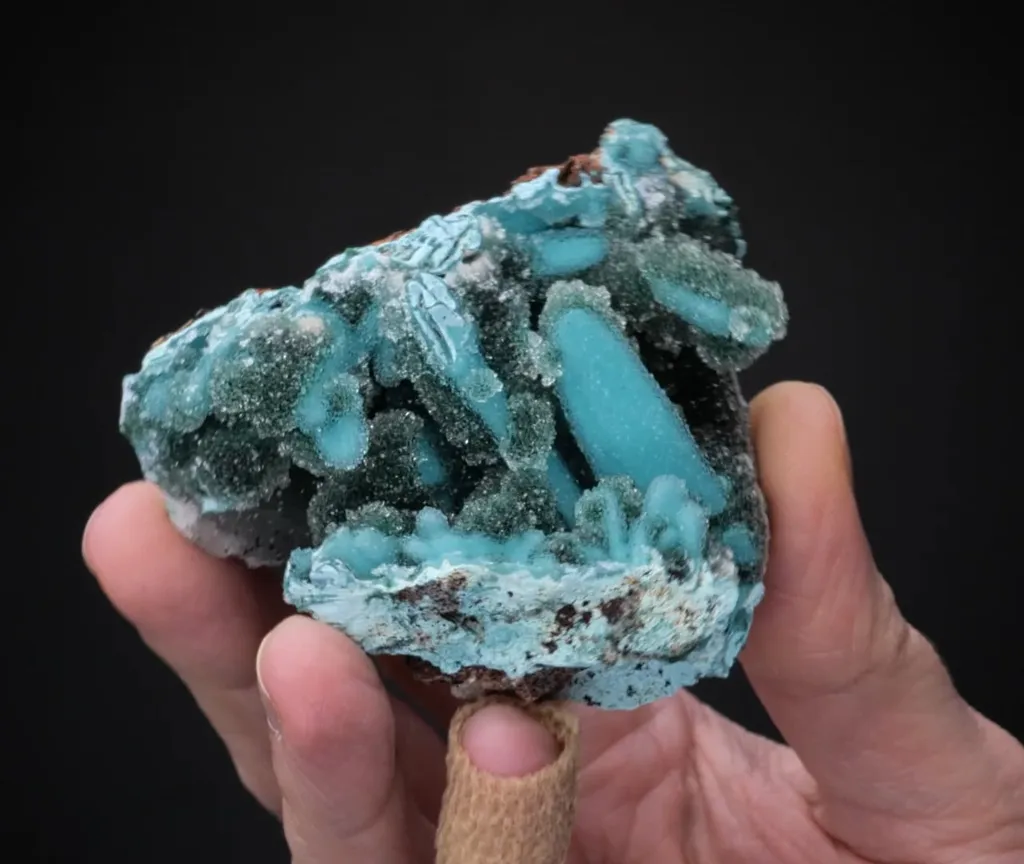The colour of this very large miniature specimen from the Tenke-Fungurume area in Kolwezi mining district, DR Congo is exquisite even before we consider what it is. It comprises an attractive array of pale turquoise blue bladed crystals rising up from a similar, but slightly paler coloured matrix with patches of rusty iron oxides. These blue bladed crystals are then coated with sparkling drusy Quartz, or studded with green Malachite and then coated in Quartz. It is only when one realizes what these crystals are, or should I say "were" that the complexity arises. These are blades of Chrysocolla - an amorphous copper silicate - coated with a fine layer of colourless Quartz crystals, but Chrysocolla does not form crystals, let alone freestanding bladed crystals. The Chrysocolla is a pseudomorph, or replacement, of Malachite, but Malachite does not form bladed crystals like these either! So, the Malachite was also a pseudomorph, but after bladed Azurite, meaning that these are Quartz coating Chrysocolla pseudomorphs after Malachite pseudomorphs after Azurite. Then there is the minor addition of more Malachite upon the bladed Chrysocolla, but before the encapsulation by Quartz - complicated or what!
CHRYSOCOLLA ps. after MALACHITE after AZURITE with MALACHITE
Editor's note
A simpler reason this is a good collectible specimen is that it has contrasting color, sparkly quartz coating and beautiful turquoise blue. The real reason you should buy it is how scientifically cool this rock is. If you are curious, the seller's description will make you go "Wow". Long story short - it used to be an azurite, then malachite replaced azurite but kept the azurite shape, then chrysocolla replaced malachite and still kept the azurite shape, and then quartz and malachite grew on top of it as a coating. Let that sink in!New Collector GuideEarthWonders Editor
CC
Description
Details
Species
Known provenanceKnowing where your specimen comes from and who owned it adds to its story and value. Good provenance helps prove it's authentic and preserves important details about its discovery.
DateOwnerPriceNote
UnknownCrystal Classics
Not disclosed
—Origin

